
Some people say that gray hair makes you look distinguished. Other people say it's simply a sign that you're getting older.
Regardless of how you feel about gray hair, it's nearly a guarantee as you get older.
For some people, graying occurs at a surprisingly young age, and for others, it occurs much later. In this article, we cover everything you've ever wanted to know about going gray.
I believe that you should be thankful for your gray hair.
If you've read my article on female hair loss, you know that it's a blessing to even have a full head of hair as you get older, but I digress.
Without further ado, let's dive into the research. Do you know why the hair turns gray as you get older?
Table of Contents
- 1 What Causes Gray Hair?
- 2 Does Stress Cause Gray Hair?
- 3 How to Prevent Gray Hairs
- 4 How Would I Look with Gray Hair?
- 5 How to Color Gray Hair
- 6 What Is the Best Hair Color for Gray Hair?
- 7 How to Make Gray Hair Smooth and Shiny
- 8 Why Does Gray Hair Turn Yellow?
- 9 Why Is My Gray Hair Coming in Curly?
- 10 Does Henna Cover Gray Hair?
- 11 Does Pulling Gray Hair Cause More?
- 12 What to Do About Frizzy Gray Hair
- 13 Does Blackstrap Molasses Reverse Gray Hair?
- 14 Does Toner Cover Gray Hair?
- 15 Does oVertone Work on Gray Hair?
- 16 Why Do I Have Gray Hair at 20?
- 17 Does Everyone Get Gray Hair?
- 18 Does Gray Hair Cause Itching?
- 19 What Getting Older Means for Your Hair
- 20 What Is Hair?
- 21 Texture and Thickness: Why Does Hair Thin with Age?
- 22 Going Gray: When Will I Get Gray Hair?
What Causes Gray Hair?
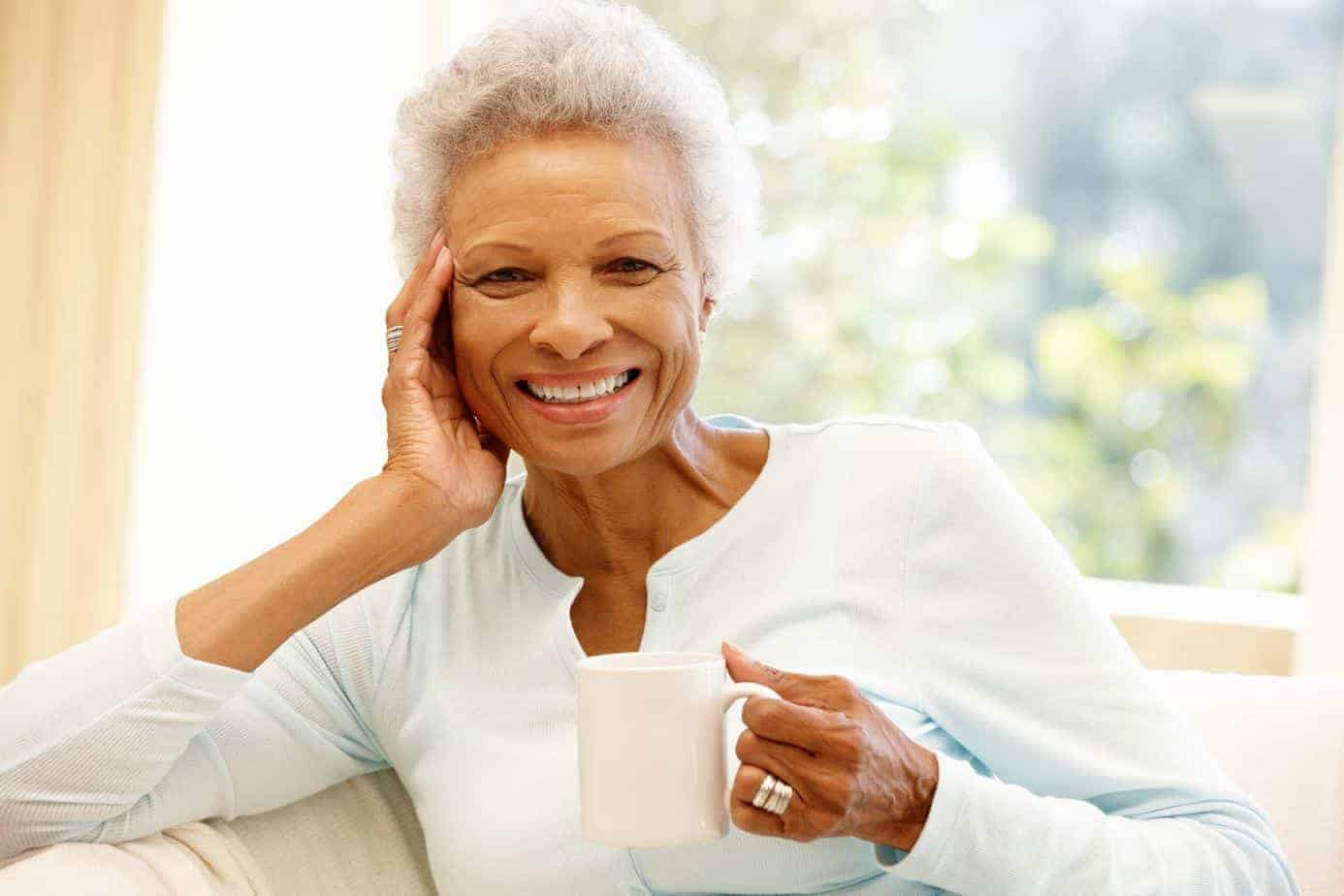
Over the years, scientists have performed quite a bit of research to understand exactly why the hair grays.
Gray hair, which is commonly referred to as "salt and pepper" when it's combined with black hair, is not a product of gray or white pigmentation.
There is a natural pigment called melanin (specifically eumelanin and pheomelanin) that gives the hair its color.
Melanin is produced in the hair follicles by melanocyte cells. Over time, the melanocyte cells are damaged and they are unable to continue producing melanin.
Most scientific studies say that this is due to DNA damage and the potential accumulation of hydrogen peroxide in the hair follicles.
There is a theory called the DNA damage theory of aging that supports this argument. Without melanin, your new hair growth will not have any pigmentation, making the hair appear to be gray or white.
How soon the graying process begins is generally determined by the genetics of each individual.
This essentially means that if your parents started graying early, there is a good possibility that you could gray early also.
Other than age, there are also certain medical conditions that can cause gray hair including a thyroid deficiency, low levels of Vitamin B12, or Waardenburg syndrome.
Does Stress Cause Gray Hair?
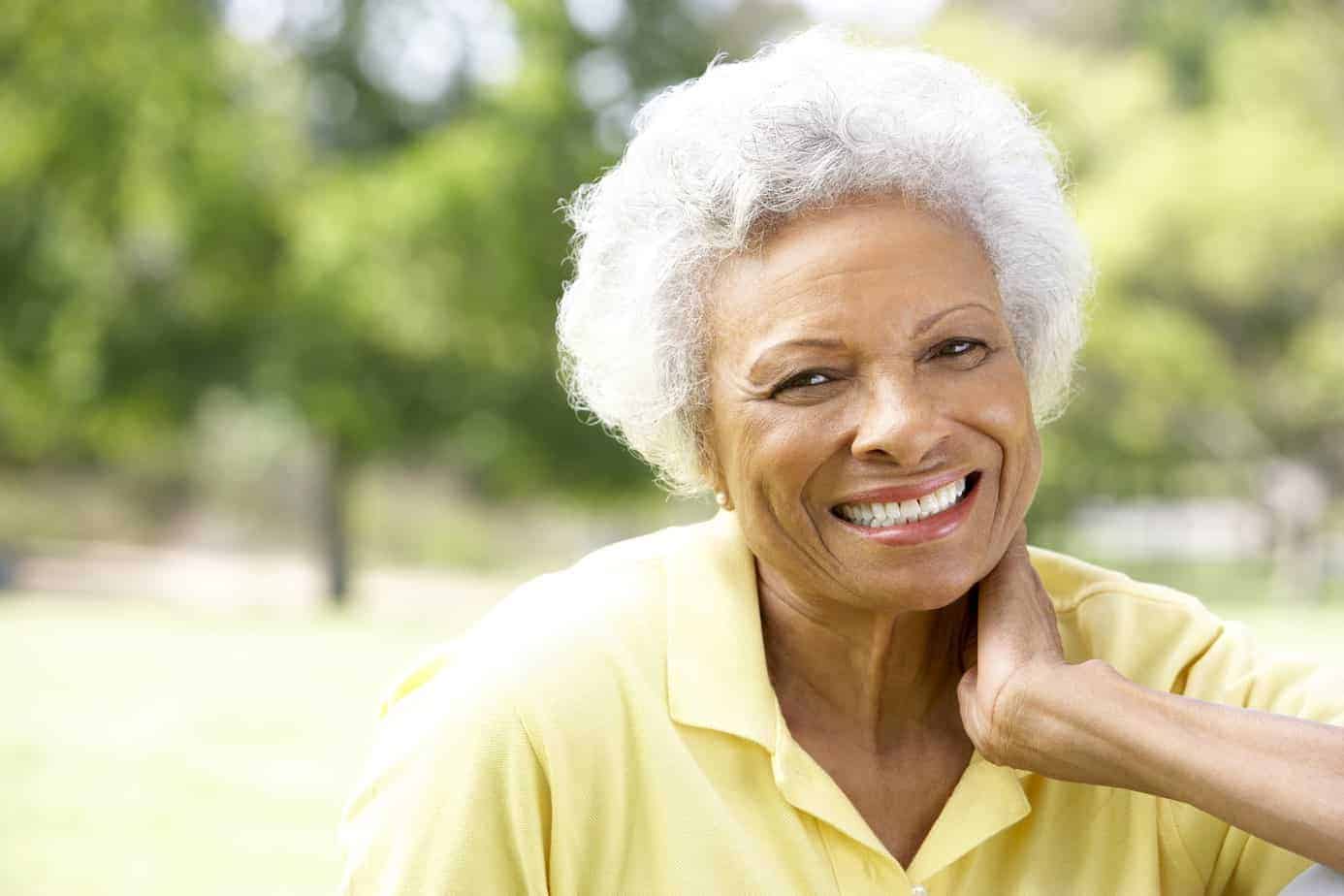
The popular belief is true: stress can cause gray hair.
You’ve probably seen anecdotal evidence of this phenomenon in people with highly stressful jobs, such as the President of the United States. Until recently, it wasn’t scientifically proven.
Research published in 2020 proves that stress causes hair to gray. In this study, mice were exposed to varying levels of stress. All of the mice began to exhibit gray hair to different extents.
Yes, stress does cause gray hair. How?
Our hair is colored by the pigment melanin, and stem cells known as melanocytes produce it. As we age, the presence of these pigment-producing stem cells (i.e., pigment cells) decreases. This is why our hair turns white as we enter the later stages of life.
When we experience stress, our body produces noradrenaline. Noradrenaline signals our sympathetic nervous system to go into fight-or-flight mode.
Sympathetic nerves can be found all over the body, and they are present in every hair follicle.
When the sympathetic nervous system is activated, it activates the melanocytes that are typically dormant until new hair needs to be produced.
Repeated activation of these melanocytes can cause their stores in the hair follicle to become depleted. Over time, they are no longer able to produce melanin. This gives the hair a gray or white appearance.
How to Prevent Gray Hairs
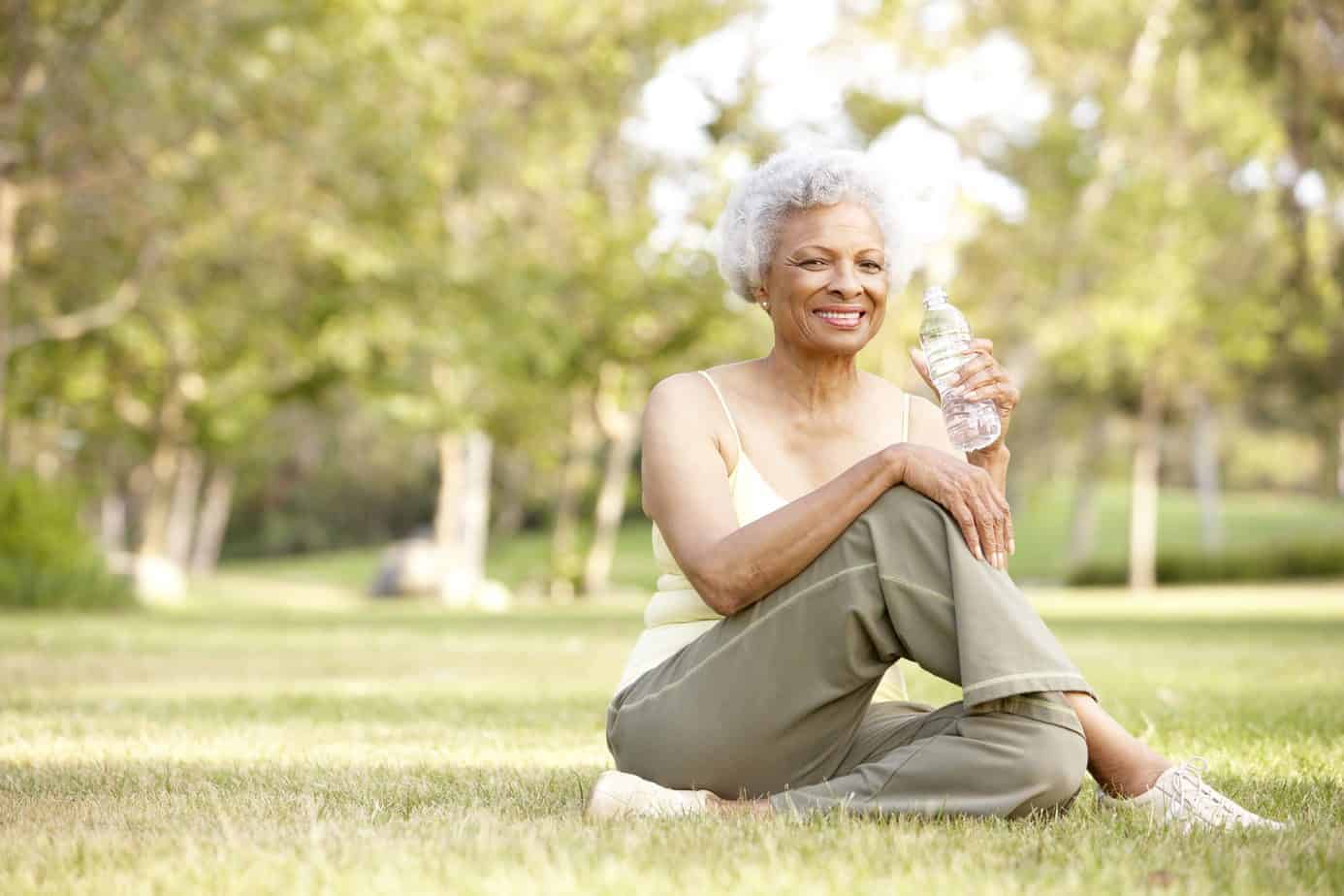
Science hasn’t yet figured out how to stop the aging process, so there’s no way to prevent hair graying that develops with age.
Another factor that you cannot control is genetics. If someone in your immediate family went gray at an early age with no underlying causes, you need to accept your fate. It's possible that you'll go gray early as well.
However, there are some things that you can do to prevent avoidable hair graying.
Stop Smoking
A study by the Indian Dermatology Online Journal found that people who smoke are 2.5 times more likely to experience premature graying than participants who did not smoke. This could be caused by the fact that smoking causes premature aging.
Take Your Vitamins
Nutritional deficiencies have been linked to premature aging and graying hair. Make sure you are eating a balanced diet, and consult with your physician annually to be certain you’re not deficient in any nutrients.
Avoid Stress
While easier said than done, it’s important to avoid stress. Research has concluded that excessive stress can cause premature hair graying.
When you can’t avoid stress because of your career or home life, make sure you have an outlet for your stress. Some ways to relax include meditating, exercising, and participating in hobbies.
How to Reverse Gray Hair
Unfortunately, there is no way to reverse gray hair.
Hair turns gray when the follicle loses the ability to produce melanin. As we age, melanocytes begin to wither away, and there’s no factory for making melanin left in the hair follicle once the melanocyte is gone.
That’s why if you pluck a gray hair, the hair grows back gray.
While there’s nothing you can do to repair the hair that’s already gray, you can take steps toward keeping the rest of your hair pigmented.
You need to eat a balanced diet rich in vitamins and minerals, and you need to avoid unnecessary stress.
Lack of adequate sleep and smoking can also lead to premature aging that will speed up how fast your grays come in.
How Would I Look with Gray Hair?
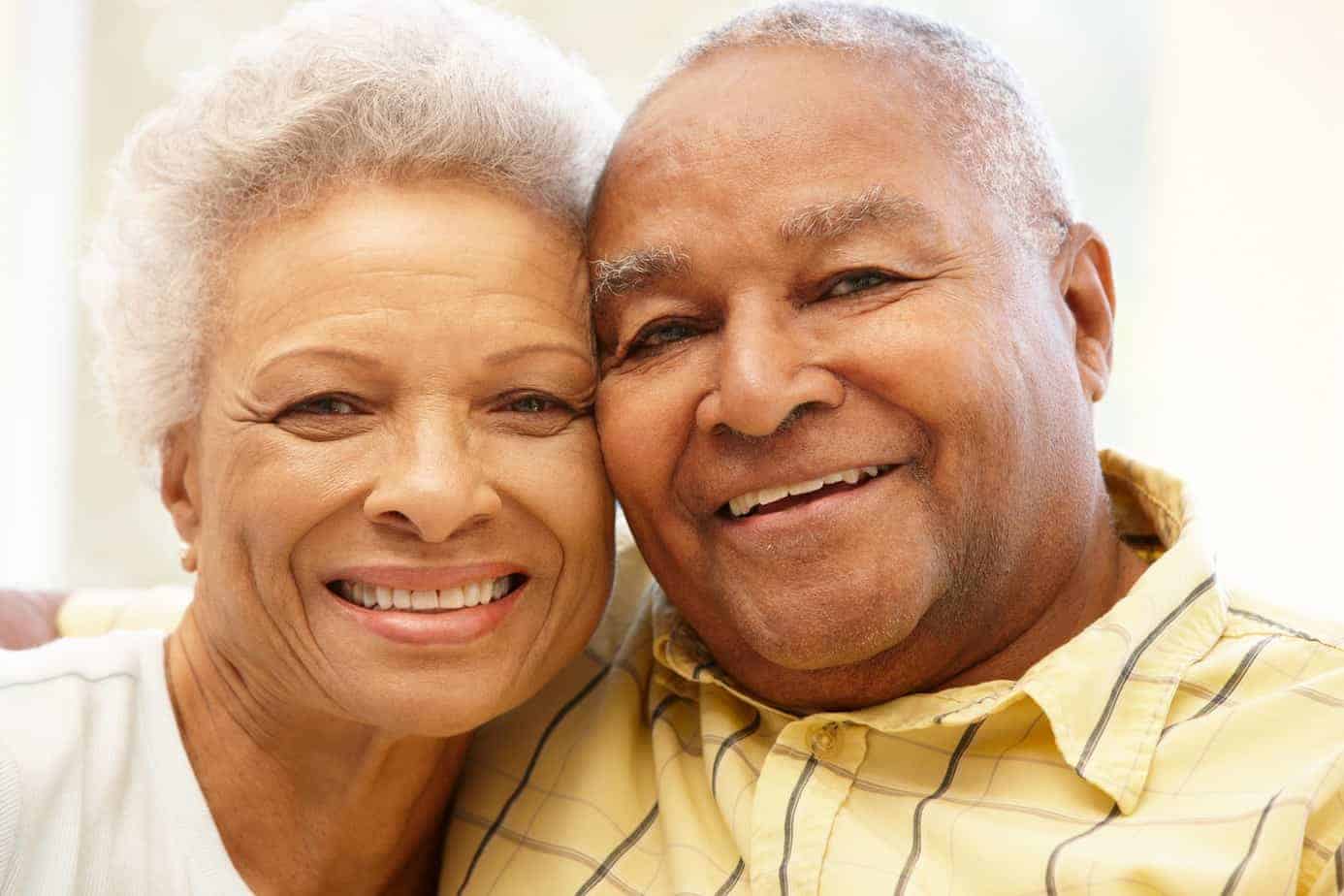
Everyone has their own preference. If you prefer to look vibrant and youthful all of your days, then you may not like yourself with gray hair.
If you’ve always yearned to be a bit older and wiser, then gray hair will be a welcome feature to you.
As gray hair is often a sign of old age, many people associate it with the elderly. However, they also associate gray hair with wisdom.
The stigma around gray hair is also changing. The recent surge in popularity for artificially-grayed hair by means of dye has resulted in many people rocking the gray look without actually having silver hair on their heads.
The cohesiveness of your gray hair can also affect how it looks on you.
Salt and pepper hair is often revered and thought of as a sign that someone is knowledgeable in their field, while someone with all gray roots and a different color of hair from mid-lengths to ends is seen as sloppy.
It’s worth it to take a chance and let your gray hair fly free. You’ll never know how it looks on you until you let it shine.
How to Color Gray Hair
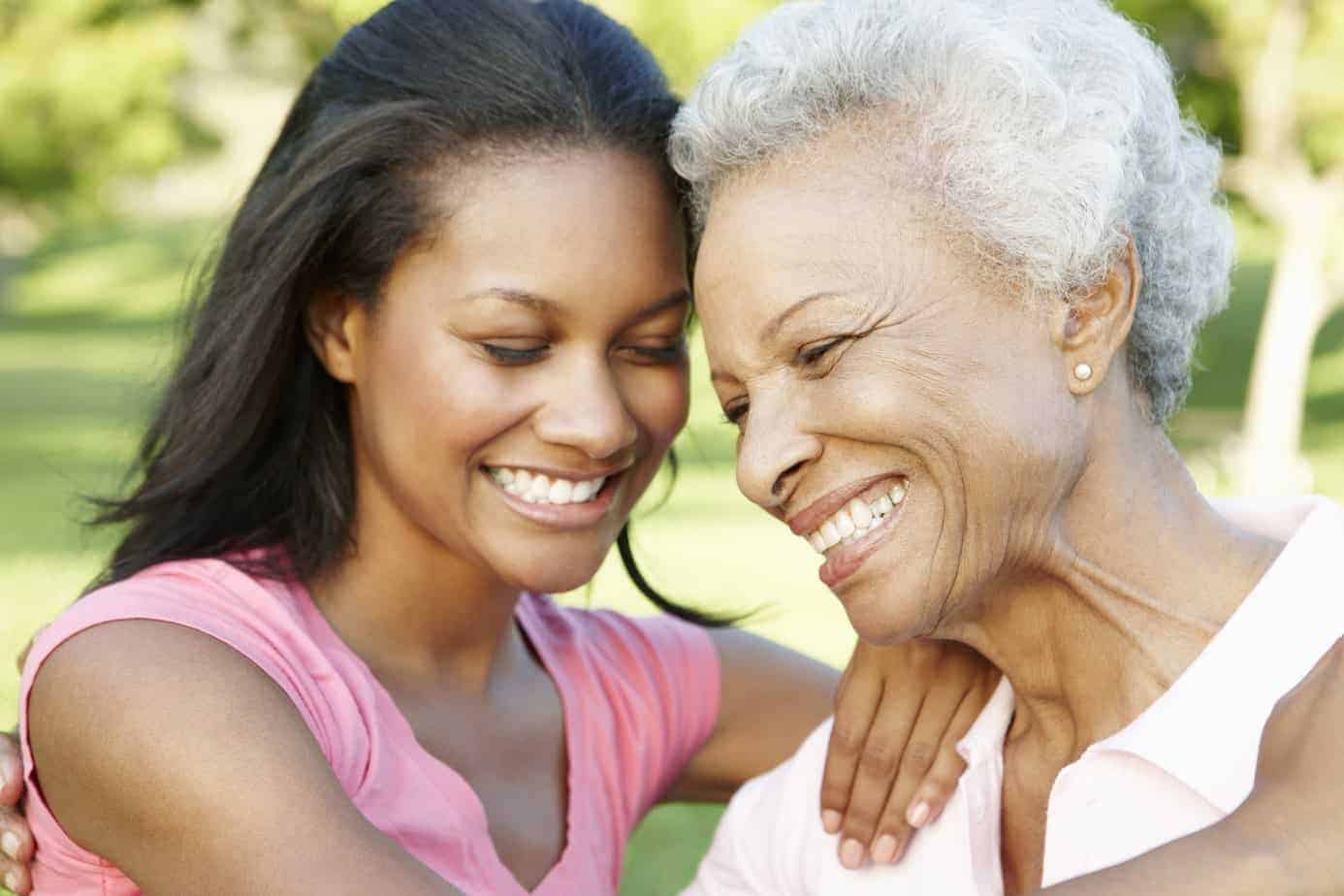
As we age, and our hair begins to turn gray, our scalp produces less oil. A scalp devoid of the hair's natural oils will lead to dry, coarse hair. This hair texture can be resistant to color.
Considering gray hair tends to resist taking up dyes due to its texture, you do have to take extra care when dyeing it.
First things first, if you’re not confident in your hair coloring abilities, or you’ve experienced at-home hair failures, leave the work to the professionals.
Professional hairstylists and colorists are trained on exactly how to handle gray hair.
Going to the salon isn’t accessible for everyone, and if you’re in a pinch, you can dye gray hair at home.
The best way to apply hair color is to mix it up in a bowl and apply it with a color brush.
Using the brush can help you get the color precisely where you want it instead of just squeezing the bottle all over your head and hoping for a good outcome.
A color mixing bowl and brush is less than $20 at any beauty supply store, and it’s something you can use over and over again.
While there’s a myth that coloring your hair when it’s dirty is best, expert stylists say clean hair is better for gray coverage.
Without any unnecessary, leftover product in the way, the pigment can go straight to the hair and begin to seep in.
You’re going to want to separate your hair into sections. The easiest method is to start off with four quadrants. You can use a hair tie or a clip to hold back each section while it waits its turn.
Beginning with the section of your choice, you’re going to saturate the gray hair with dye. If you only have a few grays, you can use pieces of foil to section off your grays and dye them individually.
If your roots or entire head are gray, you can begin by saturating the roots. Use the non-bristle end of your color brush to separate your sections into even more sections.
Imagine you’re creating pages in a book and turning them after you’ve covered them in color.
Repeat this process throughout each quadrant until all grays have been tackled.
As gray hair is often resistant to color, the common recommendation is to let your color sit for approximately 15 minutes longer than you would leave it on non-gray hair.
If you purchase a hair dye that is for gray hair, these 15 minutes should be included in the set time listed in the instructions. If you purchased a traditional color, just tack those 15 minutes on.
Once your time is up, it’s time to rinse the color out. Rinse your hair until the water running away from your hair runs clear. Do not shampoo your hair at this juncture.
You may not recognize yourself in the mirror when you step out of the shower. Your hair may feel dry after coloring, and it’s fine to apply a light layer of leave-in conditioner to freshly colored hair.
Refrain from using a deeply moisturizing hair mask on the same day that you color your hair. The mask could penetrate the hair’s structure and wash away all of the dye that you applied.
Save the hair mask for after your first shampoo post-coloring session.
Ideally, you should wait 72 hours after you color your hair to wash it. This is exactly how long it takes for the hair cuticle to fully close and trap the pigment you applied.
What Is the Best Hair Color for Gray Hair?
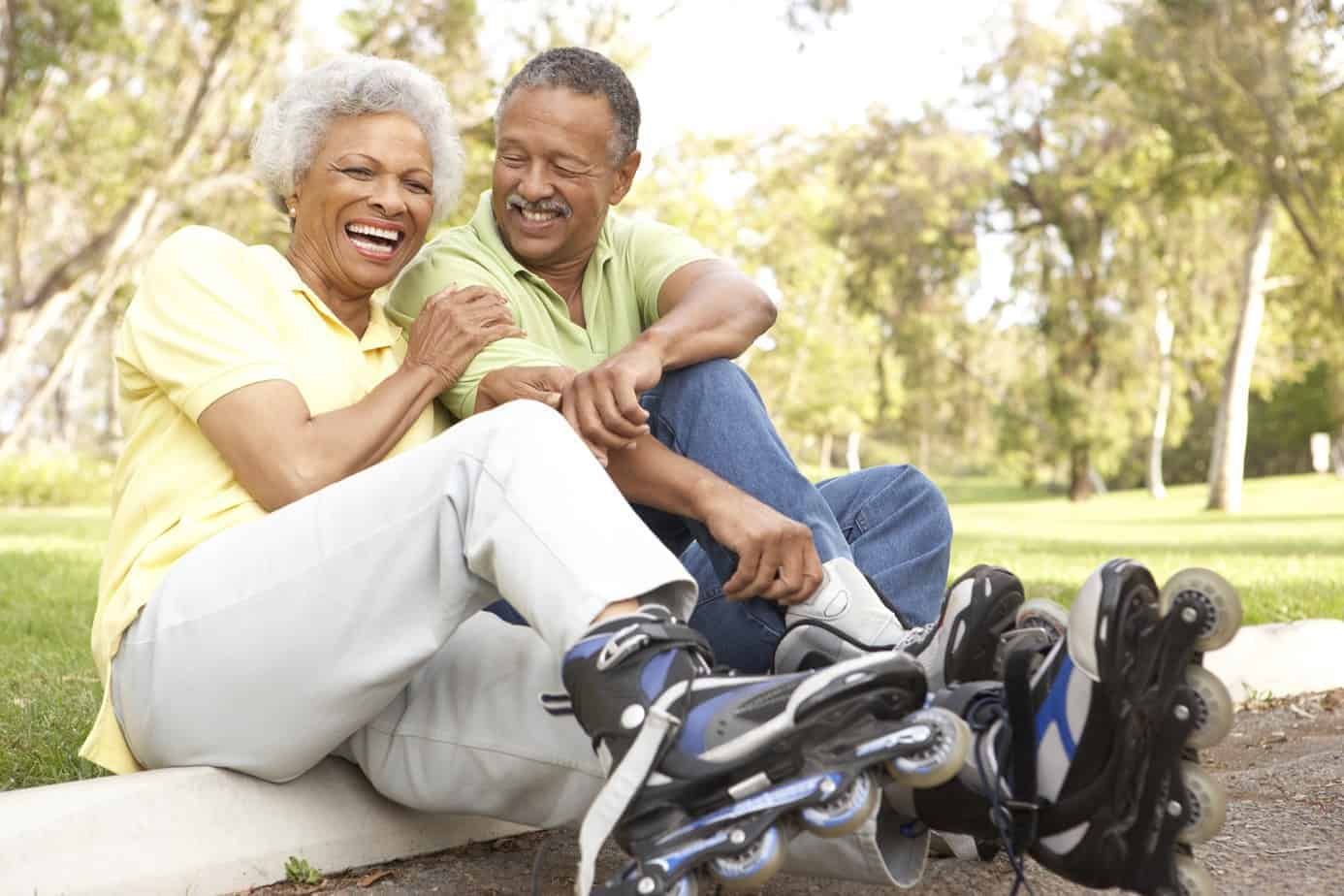
There are so many options for at-home hair color.
When dyeing gray hair, you don’t need any lift. Your hair is already at an acceptable level to accept dye without natural hair color standing in your way.
Considering you don’t need any lifting action, you can avoid caustic hair dyes with ammonia in them. You don’t have to toss away the hair color you’ve already purchased, but on your next trip to the grocery store, look for a more natural hair dye.
These dyes could be based in oil or contain a lower level of developer than others.
Hair tends to dry out with age, and using drying chemicals that you don’t need will exacerbate this issue.
Choose a hair dye formulated specifically for gray hair. These hair dyes are often more pigmented than other types because gray hair is often reluctant to accept color.
How to Make Gray Hair Smooth and Shiny
The key to having shiny and smooth hair at any stage in life is to keep it healthy.
Ensure your hair care routine is providing adequate moisture for your hair.
Avoid using damaging heat when possible, and use a high-quality heat protectant when you have to style with heat.
Lightweight hair oils can be applied after styling to reduce frizz and make your hair smooth. It also adds a boost of shine to your locks.
Why Does Gray Hair Turn Yellow?
Gray hair lacks any pigment, so it is the perfect canvas for colors from your environment to broadcast themselves on.
If you’re using a hair product that contains artificial dyes, you may notice the pigments being deposited into your hair over time.
Discoloration can also happen when your hair is exposed to smoke, becomes burned, or comes in contact with certain minerals and chemicals.
To counteract the yellowness, you should use products that are specifically tailored for gray hair. Sulfate-free shampoos are gentle on the hair, and they won’t strip your scalp of the natural oils it produces.
Why Is My Gray Hair Coming in Curly?
There’s really no scientific reasoning behind why gray hair can sometimes come in curly.
With everything we’ve learned today, a key factor could be the lack of natural oils produced by the scalp. Oil weighs down the hair, and enough weight can cause curly hair to lie straight.
As the oil dissipates over time, hair becomes lighter and potentially curlier than before.
Does Henna Cover Gray Hair?
Henna is a natural alternative to hair dye, and it is made from the plant material of lawsonia inermis.
Henna has been used to color hair for decades, and it will cover gray hairs.
Pure henna produces reddish-brown earthy tones in gray hair. If that’s not the look you’re going for, you’ll want to purchase a henna that is mixed with indigo.
The blues in the indigo will cancel out the orange tones, leaving you with a rich, brown hair color.
If you used blonde henna dye, you would end up with a translucent, yellow tone in your hair. It won’t help you achieve the platinum blonde coloring.
Does Pulling Gray Hair Cause More?
Thankfully, pulling out your gray hair won’t cause more grays.
However, the hair that you extract is going to grow right back in its silver shade. For best practice, put the tweezers down and leave your grays alone.
Plucking your grays won’t cause any harm, but it also does no good.
What to Do About Frizzy Gray Hair
The number one cause of frizz is a lack of moisture. Hairs begin sticking out from the head in an attempt to gather moisture from their environment.
To quell frizzy, unruly hair, you need to have a proper hair care routine that has the right amount of moisture for your hair type.
Curly hair requires significantly more moisture than straight hair. It’s often naturally drier, and to tame your locks, you’re going to need a significant amount of moisture.
Another way to get more moisture into your hair is to stop washing it as often. When we shampoo our luscious locks, we’re scrubbing and stripping away the natural oils in our hair.
Does Blackstrap Molasses Reverse Gray Hair?
Molasses is the liquid result of boiling down sugarcane. This viscous liquid is used in place of other sweeteners in lots of cooking and baking applications.
Blackstrap molasses gets its name from its rich, dark coloring. It’s made from boiling molasses twice over. As the sugars in molasses caramelize, a dark color appears.
Blackstrap molasses doesn’t taste as sweet as its traditional counterpart, and it only contains 10 grams of sugar per tablespoon.
For being a sweetener, molasses is a significant source of the following nutrients:
- Calcium
- Iron
- Magnesium
- Manganese
- Potassium
- Vitamin B6
This high nutrient density could be the reason that some claim it works to “reverse” gray hair.
Iron, calcium, and vitamin B6 deficiencies can be the cause of premature graying hair.
The only evidence of blackstrap molasses “curing” gray hair is anecdotal. Some reviewers claim it worked miracles for them, while others were less than impressed with their results.
While it is possible to reverse hair that has grayed due to a vitamin deficiency, there is no way to reverse hair that has become gray with age. The hair follicle simply lacks the means to produce any pigment.
In the case of a vitamin deficiency, the person has the ability to produce the pigment, but their melanocytes are lying dormant.
Does Toner Cover Gray Hair?
Hair toner is a product that helps correct color. It can eliminate unwanted undertones in hair.
Gray hair lacks pigment, so there is no undertone to correct. Therefore, toner won’t cover your grays.
However, toner can be used to transform your non-gray hair.
If you went platinum blonde in an effort to conceal your grays, purple toner is your best friend.
Your hair can only lift so much, so you may not leave the salon with bright white hair as you had envisioned. Utilizing a purple toner will correct any brassy undertones in your blonde hair to achieve that platinum effect.
If you want to see what you’d look like with all gray hair, you can use a silver toner to blend the blonde hairs in with your grays.
When you dye gray hair, it may produce a more vivid result than the surrounding hairs, as there’s no underlying pigment to clash with the dye.
In this instance, you could use toner on your freshly dyed gray hair to tamp down the brightness of your color and cancel out any unwanted red, yellow, or orange undertones.
While toner won’t cover your grays, you can still use it on gray hair.
Does oVertone Work on Gray Hair?
You may be surprised to hear that oVertone does work on gray hair.
As is the case with any coloring agent, you’re going to need to work a little bit harder to achieve the color you want than someone with non-gray hair.
oVertone users rave about their Extreme collection, which is said to have the most pigment possible, and it seems to be the best choice for covering grays.
oVertone’s coloring conditioner formulas are very enriching for hair, so you don’t have to worry about causing damage by leaving it on too long.
For the best results possible on gray hair, apply oVertone to dry hair. Dry hair will soak up more product and, therefore, more pigment if it’s dry.
Coat your hair evenly and thoroughly. Then, you’ll want to wrap your head in saran wrap or a plastic shower cap. While the plastic wrap idea may sound crazy, it will keep the conditioner from drying out on your head.
As the conditioner dries, your hair won’t be able to soak up the color it’s providing. This could result in muted or uneven results.
Without any plastic wrap to keep the moisture in, the conditioner will have plenty of time to dry out because you’re going to leave the oVertone in your hair for 45 minutes to 1 hour.
When your timer dings and it’s time to rinse your hair, you’ll need to begin rinsing the conditioner away with warm water. Avoid using scalding hot water, as it could strip your hair of the color you just applied.
Once the conditioner is rinsed about 80% of the way out of your hair, you’ll want to turn the water temperature to cold. Cold water causes the hair cuticle to contract and close, locking in the moisture and pigment you’ve just added to it.
Keep in mind that oVertone is a color-depositing conditioner. It is not hair dye. It will not last as long as permanent or even semi-permanent hair dye.
It’s a fun way to experiment with color, and if you’re looking to amp up your gray-hair game, they even sell silver pigment depositing conditioners and shampoos.
Why Do I Have Gray Hair at 20?
A 20-year-old with gray hair qualifies as prematurely graying. The average age for going gray is the mid-30s to 40s.
One of the most commonly known causes of gray hair is genetics. Scientists can’t put the blame on the paternal or maternal side, but the gene that could be responsible for premature graying is called IRF4.
Other causes of premature graying include autoimmune disorders, vitamin deficiencies, and stress.
Does Everyone Get Gray Hair?
Eventually, everyone will get gray hair. Some people may not experience their entire head of hair turning white, but everyone’s hair loses the ability to pigment itself over time.
Our hair is colored by melanin, which is produced by melanocytes. These pigment-producing cells become less populous in our skin and hair over time.
Does Gray Hair Cause Itching?
When you’ve got an itchy head, it’s because your scalp is itching. Not your actual hair follicles.
Therefore, gray hair does not cause itching.
However, an itchy scalp can be caused by stress. Stress causes your body to produce inflammatory responses, and these responses can lead to your scalp leaching moisture. Without moisture, your scalp will become dry and flaky.
The most common cause of an itchy scalp is seborrheic dermatitis. Try a dandruff-reducing shampoo for a few washes. If the itching persists, see your primary care doctor or a dermatologist.
What Getting Older Means for Your Hair
As time goes on, what were once luscious locks may now seem thin, wiry, and gray. The reality is that getting older doesn’t just have impacts on your body, it can also affect your hair.
The good news is that you’re not alone – we’re all getting older, and that means the majority of us will, at some point, have to deal with changes to our hair caused by natural aging.
For many, it’s often more than just a few stray gray hairs – it can also be thickness, texture, color, and balding. Let’s break down some common signs of hair aging and walk through what you can do to help fix them.
What Is Hair?
So, what is hair, anyway? Many people don’t often stop to think about this, but it can be helpful to understand the makeup of your hair in order to effectively address hair aging.
Each strand of hair is made up of keratin, a strengthening protein, and then surrounded by overlapping sheets that create the hair cuticle. The hair follicle in the epidermis and dermis is actually the only living part of your hair.
This means that the hair we see and take so much pride in caring for is actually dead.
Weird, right?
The aging of your hair can be caused by a few different factors, including microscopic, biochemical, or hormonal alterations that impact the hair follicle.
Hair aging can even be caused by external environmental factors (often induced by you) that are rough on the hair, causing unnecessary wear and damage.
Texture and Thickness: Why Does Hair Thin with Age?
Believe it or not, your hair has some staying power.
In fact, a single hair can live up to roughly four or five years. Of course, your hair is growing during this time – on average, a little less than half an inch per month.
That means that if you have hair that’s a foot long, then your hair has been through nearly three years of wear and tear.
This includes everything from UV light to heat from styling tools like blow dryers, curling irons, or flat irons, and potential chemical exposure through treatments like coloring, perming, or straightening.
Even the friction from brushing your hair can take a toll.
When you think about it, it’s amazing that your hair doesn’t give up faster. All of this wear and tear causes cuticle cells to raise up and soften, meaning your hair looks rougher and is more likely to break.
As time passes, follicles produce thinner and smaller hairs – or at times, none at all. Some may refer to this condition as senescent alopecia, even though it might just be a sign of the natural aging process.
Recommended Solutions
If you’ve noticed major changes to texture and thickness but don’t know what to do, fear not. Luckily, the anti-aging business is booming, boasting hordes of products that claim to fight hair aging like this.
These include humectants, which serve to lock in moisture to the hair cuticle, creating a silky-smooth illusion and sealing the cuticle with a hair conditioner.
Some products claim to be rich in antioxidants that help shield the hair against harsh UV light. These products usually work by altering the appearance of each strand of hair rather than changing the structure itself.
Naturally, in conjunction with the products mentioned above, you could also make a concerted effort to take the heat out of your haircare routine.
Try your best to avoid any hot styling tools like curling irons or flat irons, and hold your blow-dryer at least 6-12 inches away from your head when drying your hair.
Going Gray: When Will I Get Gray Hair?
People with lighter skin tend to go gray sooner, with Caucasians starting as soon as their early 30s. Those with darker skin tones, they can expect to see gray hair roughly 10 years later.
As much as we’d like to be in full control of our hair, in reality, going gray is determined in large part by your genetics.
In “The Aging of Hair”, a paper by dermatology researcher Ralph Trueb, it states that 50 percent of people by age 50 will have 50 percent gray hair, regardless of gender and initial hair color.
In comparison to the hair on the scalp, however, body hair (such as eyebrows, pubic hair, and chest hair) typically goes gray much later in life.
Some say that going gray has to do with oxidative stress, a major theory of aging in general. If you’re unfamiliar with this concept, oxidative stress refers to when an excess of free radicals is made as new hairs are formed.
This subsequently damages the cellular structure that creates the pigment within the hair follicle.
This may also explain why you might find your hair becoming coarser and more difficult to deal with over time – the melanin-producing cells are closely tied to those that build the keratin hair shaft.
- What Are the Rarest Hair Colors?
- Why Is My Hair Changing Color by Itself?
- How to Dye Your Hair With Coffee Grounds
- Does Hair Dye Expire?
- Removing Hair Color to Go Grey at Home
Recommended Solutions
Of course, many people choose to simply let their hair turn gray, embracing their first gray hair and aging gracefully.
If that doesn’t appeal to you, however, you have numerous hair coloring options at your fingertips.
For example, you can get reverse highlights to add streaks of darker color back into your hair. Lowlights also look great if you're transitioning to gray hair.
Additionally, if you choose to get a permanent dye treatment, these can typically last a while despite repeated washing.
Semi-permanent color is another option, although the color will only last for several shampoos before starting to fade.
Nonetheless, a word of caution when it comes to hair coloring: permanent is important if you want to avoid frequent maintenance.
If you try to fix your problem with temporary tints, the color won’t be absorbed by the cuticle and will be washed away in no time, bringing you back to square one.




